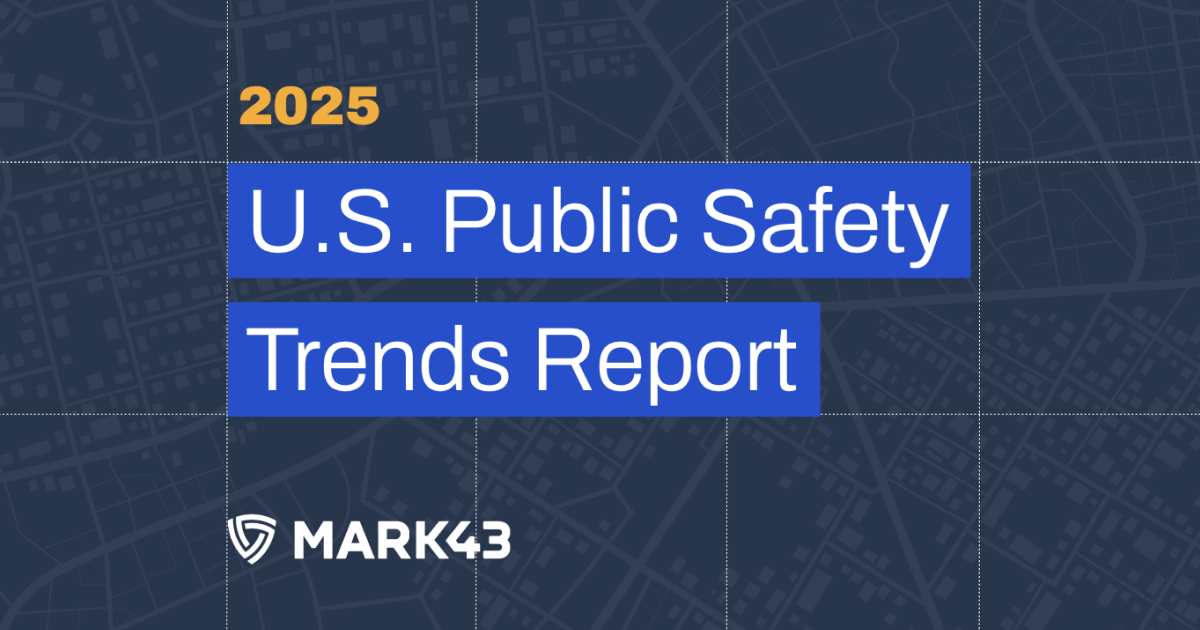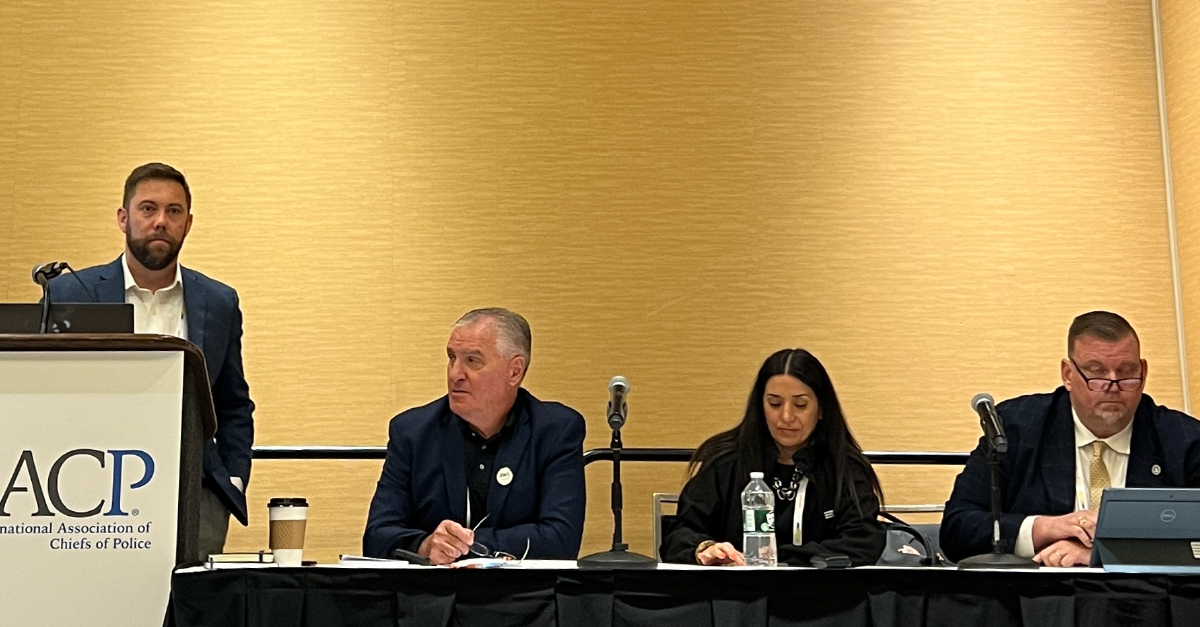
How agencies can align modern technology to their public safety mission
In 2023, there is a community expectation that their public safety agencies use modern technology. However, while the last few decades have seen incredible advances in technology, public safety has often struggled to keep up with the pace of innovation. Many agencies are still using outdated legacy technology platforms that can severely limit their ability to fulfill their primary mission of keeping their communities safe.
Modern public safety agencies need to prioritize upgrading their data management systems and equipment. To do this successfully requires a thoughtful approach to ensure that any technology they use aligns with their primary public safety mission. This means focusing efforts on:
- Moving away from legacy systems
- Sending help to where it is needed
- Building public trust
- Eliminating downtime
Moving away from legacy systems means moving to the cloud
Increasingly, modern technology means cloud-native technology. When thinking about what today’s first responder needs to be efficient, effective, and safe, agencies are concluding that they need to move away from legacy, on-premise systems and toward a cloud-native solution. This means computing resources such as networks, servers, storage, applications, and services are all in the cloud. A cloud-native platform offers modern design principles, real-time information, configurable workflows, and the ability to adapt to any situation with little-to-no strain on IT teams. This allows public safety agencies to remain focused on what matters most – keeping their first responders in the field, engaging with the community.
Sending help to where it is needed – improving agency responsiveness
A mission-critical area in need of modern technology is 911 Communications. While it is now common for ride share apps to pinpoint a user’s exact location to within a few feet or less, the nation’s Public Safety Answering Points (PSAPS) serving law enforcement, fire and paramedics have struggled to accurately place a caller within hundreds of feet of their exact location, resulting in delays in getting a first responder to a caller. There remains an urgent need to improve the ability of Public Safety Answering Points to locate a caller’s exact location.
One solution is a partnership between PSAP’s and public safety technology providers, such as the one between Mark43 and RapidSOS, who partnered to provide telecommunicators using Mark43 CAD with accurate caller location and rich additional data provided by RapidSOS. The partnership allows Mark43 to share robust data from the RapidSOS Platform – using location data pinpointed to the device being used by the caller – with telecommunicators and first responders in an emergency. This information provides first responders with unprecedented situational awareness so that they can arrive on scene faster.
“We want to improve this technology and we need technology partners like Mark43, we need vendors who can support advanced network, advanced call routing using location of the handset to be able to route that call to the appropriate PSAP.” Paul Troxel, California Governor’s Office of Emergency Services 911 Emergency Communications Branch Manager
Building public trust – data sharing to increase community engagement
A foundational way that public safety agencies can earn public trust is through sharing timely, accurate, and reliable data in ways that communities can access and understand. Modern technology can play a key role in this effort by enabling data sharing and transparency. Modern technology allows agencies to share their data openly, regularly, and intentionally.
Agencies can use technology to not only collect real-time data that can be used to drive decision making and personnel deployments, but also provide communities with access to that data through tools such as online dashboards, accessible data portals that can enable reciprocal information sharing between an agency and the community. This strengthens the relationship between residents and police. Trust influences everything: crime prevention, tip reporting, youth engagement, community participation, and closing cases.
“We’ve partnered with Mark 43 and created a foundation by which we can now communicate with our citizens. We can tell them what we’re doing, how we’re doing it. We can also temper their expectations on what they should expect when they encounter us. And all of that points to achieving a much better outcome, as well as improved trust.” – Colonel Lamar Davis, Deputy Secretary of Public Safety Services and Superintendent of the Louisiana State Police.
Eliminating downtime – Resiliency
In 2023, downtime for a mission-critical public safety applications like CAD or RMS is not acceptable. Cloud-native platforms are now seen as the best option for agencies seeking to keep their mission critical systems online, all the time, regardless of any weather event or large-scale critical incident that may be impacting the agency.
There are different levels of resiliency:
- There’s the hurricane-level resiliency, where an agency’s mission critical systems remain uninterrupted during a weather event or large-scale critical incident. While an on-premise system may lie in the path of a hurricane or be subject to localized power outages, a cloud-native CAD or RMS are stored on the cloud, far away from any storm or critical incident.
- There is the resiliency of being able to withstand cyberattacks. The cloud offers a best-in-class
adefense against the rise in cyberattacks that are increasingly levelled against public safety agencies. A key advantage to a cloud-native platform is that it is hosted by partners such as the Amazon Web Services (AWS) GovCloud, an isolated AWS region that is used for highly sensitive workloads. AWS is a highly-resourced entity that is hardened and resilient and knows how to handle inbound cyber threats.
- There is also the resiliency that comes with managing system upgrades. Unlike an on-prem system, whose upgrades need to performed locally and require the system to be taken offline anywhere from four -24 hours to undergo updates and enhancements, a cloud-native platform is able to perform those upgrades remotely and in a way that greatly reduces down time (can we say zero downtime?)
“In 2021 we set a record for 8 hurricanes making landfall, the most ever and some were very destructive. Prior to us having this technology, back in Hurricane Katrina, we lost all communication, all ability to have visual as well as mobile communication and communicate with our troops on the ground and that put us in a state of disadvantage. But now having Mark 43, we can move our dispatch across the state, we can also serve as a backup 911 contact for our citizens. So it gives us the flexibility and the resilience and it also gives us the security to be able to, again, reach our citizens, communicate with our citizens during those times of need. – Col. Lamar Davis
Modern technology can be a great leap forward for many public safety agencies, and often represents a shift in thinking for these agencies as they move away from a legacy platform to a modern, cloud-native platform. Public safety agencies looking to make a sustainable impact on their communities will develop and adopt a technology strategy that is also agile and can be expanded to incorporate emerging technologies. However, to be successful, agencies need to ensure that their technology platform aligns with their public safety mission. The best technology is the one that frees agencies to be able to recommit to their mission of serving the public and keeping first responders in the field, interacting with their community.
This is a summary of a panel discussion that was held at the 2023 AWS Imagine conference. The panel, “A new blueprint for safeguarding communities” featured three leaders at the intersection of public safety and technology offering best practices for how agencies can align modern technology to their public safety mission. Hosted by Scott Montgomery, AWS Justice and Public Safety, the panelists included Colonel Lamar Davis, Deputy Secretary of Public Safety Services and Superintendent of the Louisiana State Police; Paul Troxel, California Governor’s Office of Emergency Services 911 Emergency Communications Branch Manager; and Matt Polega, Co-Founder & Head of Marketing, Communications, and Enablement for Mark43.





